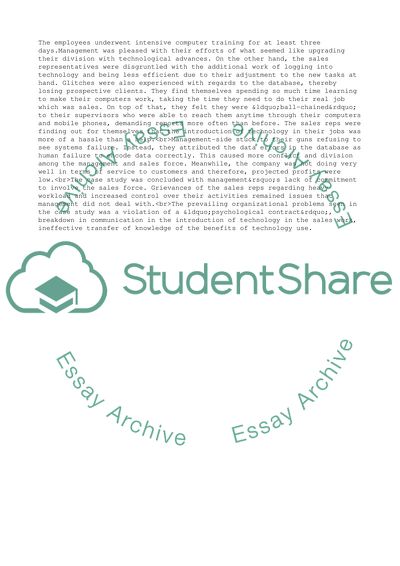Cite this document
(“Going Hi-tech at DrugDiv Essay Example | Topics and Well Written Essays - 2500 words”, n.d.)
Going Hi-tech at DrugDiv Essay Example | Topics and Well Written Essays - 2500 words. Retrieved from https://studentshare.org/management/1546466-uising-theory-to-support-your-analysis-examine-the-management-styles-in-this-case-study-and-their-effects-on-relationships-with-the-workforce-in-terms-of-power
Going Hi-tech at DrugDiv Essay Example | Topics and Well Written Essays - 2500 words. Retrieved from https://studentshare.org/management/1546466-uising-theory-to-support-your-analysis-examine-the-management-styles-in-this-case-study-and-their-effects-on-relationships-with-the-workforce-in-terms-of-power
(Going Hi-Tech at DrugDiv Essay Example | Topics and Well Written Essays - 2500 Words)
Going Hi-Tech at DrugDiv Essay Example | Topics and Well Written Essays - 2500 Words. https://studentshare.org/management/1546466-uising-theory-to-support-your-analysis-examine-the-management-styles-in-this-case-study-and-their-effects-on-relationships-with-the-workforce-in-terms-of-power.
Going Hi-Tech at DrugDiv Essay Example | Topics and Well Written Essays - 2500 Words. https://studentshare.org/management/1546466-uising-theory-to-support-your-analysis-examine-the-management-styles-in-this-case-study-and-their-effects-on-relationships-with-the-workforce-in-terms-of-power.
“Going Hi-Tech at DrugDiv Essay Example | Topics and Well Written Essays - 2500 Words”, n.d. https://studentshare.org/management/1546466-uising-theory-to-support-your-analysis-examine-the-management-styles-in-this-case-study-and-their-effects-on-relationships-with-the-workforce-in-terms-of-power.


